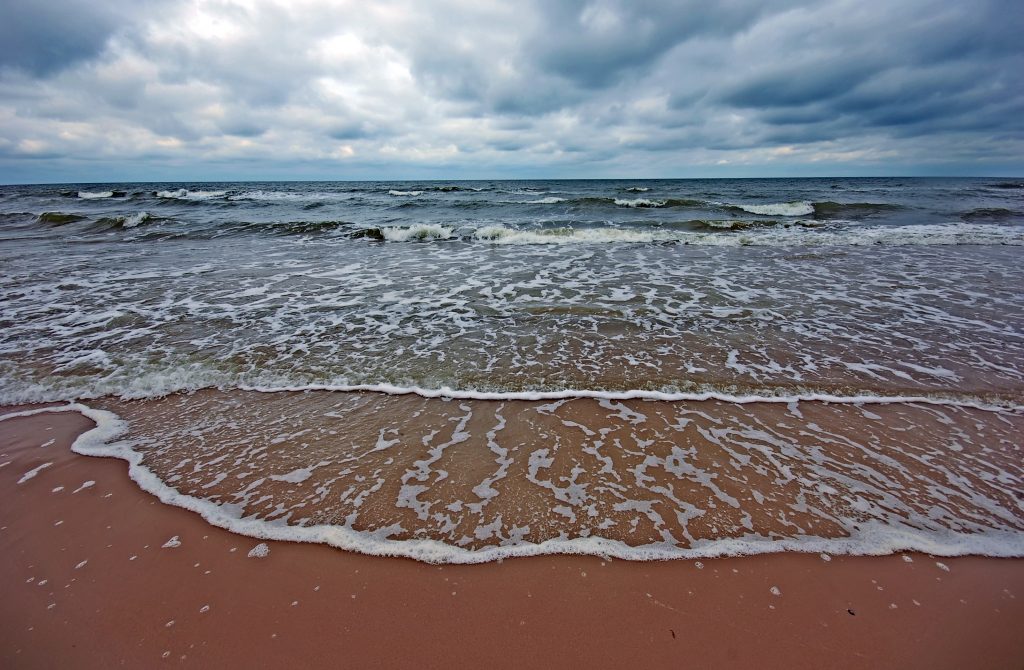Summer is what we look forward to when we want to tan. Getting soaked under the sun, lying down on a beach lounge or a pool bed, and all that just to get some nice shiny bronze.
But we all know the damage of getting exposed in too much sun. Serious skin conditions, skin complications such as cancer, are just some of them. Although, we just can’t resist. Rain or shine, we want to get as much sun as possible.
The question is, what can you do when the sky is overcast but you don’t want to use a tanning bed, or apply fake tan? Can you tan when it’s cloudy? This article will answer if tanning on a cloudy day really works. Continue reading down below!
How does tanning work?
Tanning is the process wherein our skin gets darkened or tanned. Through exposure to ultraviolet or UV rays of the sun, the body produces melanin, a pigment that gives color to the skin. Hence, the more melanin a person has, the darker their skin becomes.
Staying under the sun or sunbathing and being exposed to UV rays will get you your desired complexion, but keep in mind that the production of melanin will not show easily, so if you want to achieve your desired skin tone, you might want to be a little patient and just trust the process. You don’t want to overdo it in a single day and get serious complications!
1. Know the different types of UV rays
First off all, you need to know the different types of UV rays and how these affect the skin differently. There are three types of ultraviolet (UV) rays, namely UV-A, UV-B, and UV-C.
Also known as long-wave light or black light is the UV-A ray. It is the one that gives us a tan complexion, as it penetrates the skin’s second layer. Next is the UV-B ray, which causes damage to skin, hence sunburn. It damages the skin’s top layers. Lastly, is the UV-C, filtered by atmosphere and absorbed by the ozone, so it never reaches the Earth.
So next time you want to go outside and bathe under the sun, you might want to get a sunscreen that will protect you adequately from the UV rays you don’t need.
2. Exfoliate the dead skin
Before actually going out and bathing in the sun, you might want to exfoliate your skin first. Exfoliating the skin means removing the dead skin so that a fresh new skin will appear as you plan to tan. This will help prevent your skin tone from being uneven.
3. Apply the right kind of sunscreen
Now, tanning doesn’t mean you shouldn’t use sunscreen or else you won’t get that sun kissed glow. Sunscreen is actually important for protecting your skin from the harmful effects of the sun. Just don’t use a whitening sunscreen if you want to tan.
Broad spectrum sunscreens are advisable for whoever wants to go out in the sun. If you have darker skin, sure, a sunscreen with a lower spf can do, but if you have fair skin, you might want to invest in sunscreens that have a higher spf.
4. Choose the perfect time to tan
We all want to achieve that great healthy bronze as fast as possible, but sunbathing during peak hours or when the sun is at its highest point is a big no-no. Simply put, don’t expose yourself to sunlight during lunch time.
Choosing a shortcut to the process may lead you to serious skin complications, so it’s vital to soak under the sun at the perfect time. The standard safe time to tan is before 10am and after 4pm. We’ll talk more about this later.
5. Apply a moisturizer after
Soaking under the sun isn’t the last step to get that perfect tan. You really want to moisturize the skin after exposing it hours under the sun’s harmful rays, especially if you want to avoid sunburn and dry skin, or other more harmful effects.
Investing on an aloe concentrated moisturizer would be the best option, or better yet, cut open a fresh aloe plant! Moisturizing your skin will help lock the color down and will also help your skin get healthy again after all that sunbathing.

Can you tan when it’s cloudy?
Yes! Contrary to popular belief, tanning when it’s cloudy is definitely possible. It’s not only under the sun that we get to tan, but under the clouds too. Research says that about 87% of the sun’s UV Rays penetrate the clouds, depending on the type of clouds of course . Thick grey ones will block most of the UV rays, while white fluffy ones block them less.
Tanning on a cloudy day is much safer than on a sunny day, but nonetheless, it doesn’t ensure you not getting a sunburn, or more aptly called cloud burn. Sun rays do pass through clouds, it’s just that the overcast will reduce the UV rays. So, while you can enjoy sunbathing during a cloudy day, don’t forget to still use sunscreen.
Can you tan through a window?
You can definitely tan through a window. The sun’s UV rays can pass through glass easily, hence it doesn’t matter whether you are beside your car’s windows or inside your house. You can still get that tan, but it will not be as fast as tanning outside. If you want to go tanning, but are just too lazy to go outside, then this is the next best option.
Glass does not have the ability to block the UV rays from reaching your skin. Actually, it only acts as a barrier and slows down the tanning of the skin. So remember, you’re still not that safe indoors from the UV rays of the sun. For that, apply the same sun protection or sunblock even when you are in the safe premises behind a window.
Can you get a sunburn in the shade?
Yes, you can get sunburned in the shade, too. It’s not that umbrellas don’t protect you from the sun’s rays. It’s just that the UV light reflects off of other surfaces, and that can still lead to sunburn. There are two causes of sunburn- directly from the sun, and indirectly when the UV rays bounce back from surfaces such as sand, concrete, or even grass.
Getting a sunburn through clothes is also possible. Sometimes, your clothes can block UV rays altogether, but most of the time, plenty of these harmful rays still pass through. This is especially true for thin and dark colored clothes. Heavier and tightly weaved materials provide more protection, while clothes that are flexible or stretchable are more prone to let rays pass through.
You can also get sunburnt underwater. While most UV-B rays are absorbed by water, at least 40% can still pass through a half meter depth. So, if you want to take a dip in the water without getting your skin burnt, stay in the deep!
When is the best time of day to tan?
As we have mentioned earlier, the best time of day to tan is early in the morning before 10am, or in the late afternoon after 4pm. These times are the safest to tan, since the sun’s rays won’t be as dangerous during noon time.This is because during early in the morning and late afternoon, the UV rays are not as intense as they are when the sun is highest in the sky.
It is important to know what time of the day is best to tan, so you can achieve that healthy bronze, not a lobster red complexion. Remember, tanning when not done properly and wisely can lead to serious issues. The UV rays can cause harmful effects especially at peak hours of the day.
To summarize…
Can you tan when it’s cloudy? Definitely! Now you don’t have to endure the harsh sunlight and prickly heat just to get that perfect sun kissed complexion. You can get a tan under the clouds, but just make sure to remember these useful information when tanning on a cloudy day.
Tanning on a cloudy day may not be as harmful as it is on a sunny day, but it may still cause problems! Just never underestimate the power of the sun, and in turn, you’ll get the exact color you wish!




